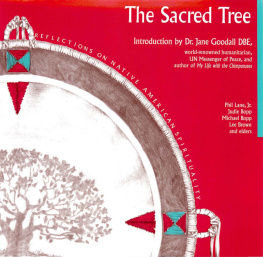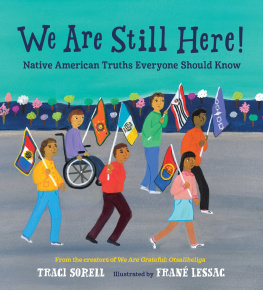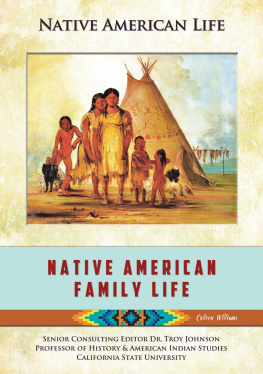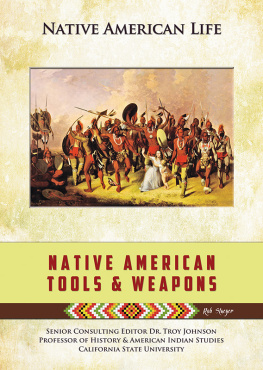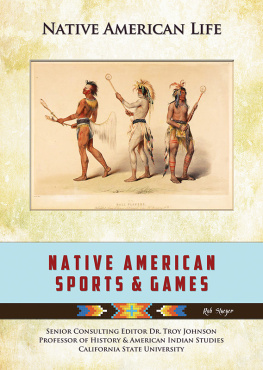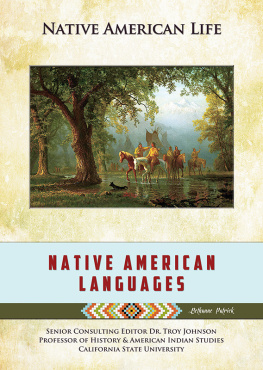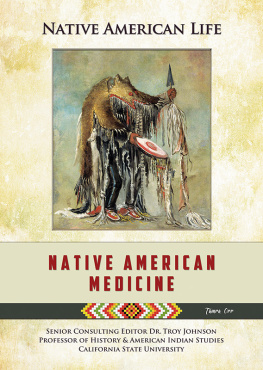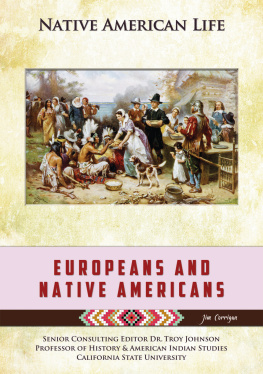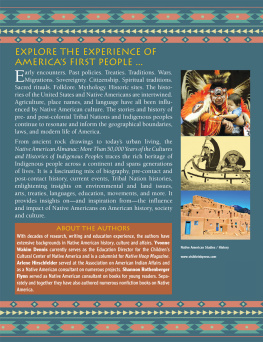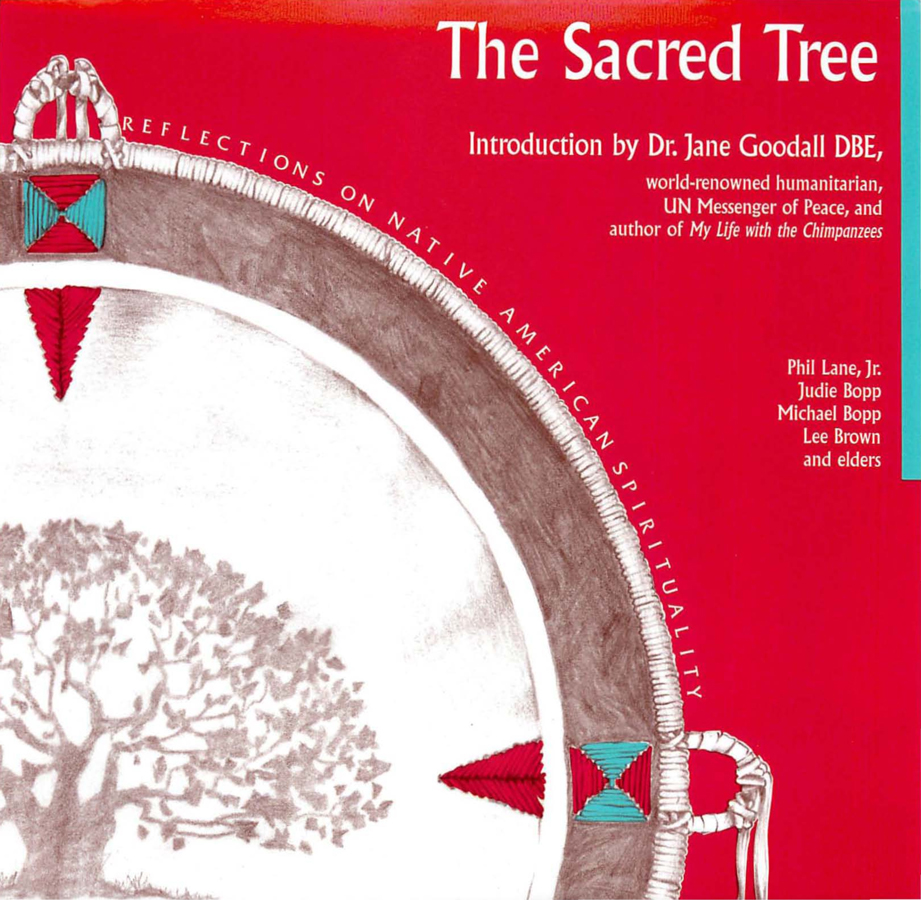THE SACRED TREE

Dedicated to the countless clans, tribes and nations of indigenous people throughout Mother Earth whose sacred visions, dreams, prayers, songs, wisdom, experience and kind guidance form the foundation and living reality of the Sacred Tree.
Produced Collaboratively By:
Judie Bopp, Michael Bopp, Lee Brown and Phil Lane, Jr.
Illustrations by:
Patricia Morris
Copyright 1984 (second edition 1985)
All rights reserved
Four Worlds International Institute
For Human and Community Development
P.O. Box 75028
White Rock, BC V4B 5L3
International Coordinator:
Phil Lane, Jr.
Funding Provided by:
National Native Alcohol and Drug Abuse Program of Health and Welfare Canada
Published in the USA (Fourth Edition 2004) by:
Lotus Press
P.O. Box 325, Twin Lakes, WI 53181 USA
Phone: (262) 889-8561 Fax: (262) 889-2461
lotuspress@lotuspress.com (email) www.lotuspress.com (website)
ISBN: 978-0-9415-2458-2
Library of Congress # 89-63193
Printed in the United States of America
Editorial Note:
In English it is impossible to refer to a person without using a pronoun that indicates gender or sex (e.g. he or she, him or her, his or hers). Since there is no special word to refer to a person whose gender is not known, most writers have chosen to use the masculine form in these situations.
This custom of using the masculine form when referring to a person who is not known to be a female, has caused a conspicuous absence of reference to women in English writing.
Thus all of the great ideas and discoveries discussed in English literature are expressed in masculine terms and the reader constantly visualizes males, rather than females, as active participators in the world. Our society's tendency to devalue the role and contributions of women is only augmented by this lack of picturing women in an active, creative role.
The Four Worlds Development Project has chosen to alternate the use of feminine and masculine pronouns whenever the reference is unspecific. This choice of usage is a deliberate one to avoid the awkwardness of the compound form (he/she; him or her) while at the same time acknowledging the harmful consequences of bowing to a convention that persistently forces its audience to visualize the world as dominated by men and operating on ideas expressed in masculine terms.
The Four Worlds Development Project is the result of many people's efforts and wisdom. Some were directly involved, others inspired us through their work in education and alcohol and drug abuse prevention.
Direction for this project was set at a conference held in Lethbridge, Alberta in December, 1982. Participants at the conference were Native elders, spiritual leaders and professionals of various Native communities in North America. Their contributions were framed by their deep commitment to Native people and their own, often hard won, experience. To each of them we offer our deepest respect and appreciation.
Harold Belmon
Mark Belmont
Andy Black Water
Ed Calf Robe
Steve Courchene
Ricki Devlon
Tyrone Eagle Bear
Perry Fontaine
Leonard George
Cindy Ginnish
George Good Striker
Woodrow Good Striker
Ed Heavy Shields
Peter Heffernan
Lionel Kinunwa
Germaine Kinunwa | Bow Lane
Phil Lane, Sr.
John Many Chiefs
Sandy Many Chiefs
Jon Metric
Allan Murray
Wilson Okeymaw
Lee Piper
Doreen Rabit
Chuck Ross
Jerry Saddle Back
Herman Saulis
Frank Sovka
Eric Tootoosis
Mike White
Rose Yellow Feet |
Table of Contents
INTRODUCTION
Four Worlds International is to be congratulated for its wisdom and foresight in publishing this new edition of The Sacred Tree, and I feel very honored to be asked to write the preface. For several years now I have been working with Indigenous peoples in different parts of the world. Their ancient philosophy of respect for Mother Earth, respect for all life forms on the planet, is my philosophy too. I grew up in England, and I used to spend a lot of time up in a very special tree. He was known, simply, as Beech and I am looking out at his spreading branches as I write. For hours I stayed up there, feeling close to the birds and clouds and wind. I climbed up with my homework, with a book, or simply with my thoughts and dreams. There I learned my respect and love for nature. There I dreamed that one day I would go to Africa.
Years later, when my dream was reality, the forests of Combe national park, where I was studying chimpanzees, became my home and I got very close to the heart beat of nature. I became part of the natural world, one with the stars, the winds, the rain, and the tumbling streams. There I learned my kinship with the rustling, fluttering, scampering, flying, running of the forest creatures and learned to recognize the wild and eerie pant hoots with which the chimpanzees greet the dawn and say goodnight at the end of a good day.
Deep in one of the valleys I discovered a very spiritual place a waterfall drops down from a rocky ledge 80 feet above onto the rocky river bed, and you can hear the roar of its falling from afar. I now know this place was sacred to the Indigenous people who lived there in the old days. Their spiritual leaders went there every two or three years to perform their ceremonies before the area became a national park. A few of them are still alive, and I have invited them to come back when the spirit moves them.
It is in this magical place that one can watch the chimpanzees perform their awe-inspiring "waterfall dance". I met a Shaman in South Africa who explained that the word chimpanzee came from the Aboriginal people of Angola and means "The Ones Who Went Before". Perhaps they danced there thousands of years before human beings arrived in the forests of Gombe.
Then, for millions of years, as our ancestors began to spread across Mother Earth, as they gradually learned to walk upright, to use tools, to hunt for animals, to use their skins to keep themselves warm, to harness fire and cook food, they lived in harmony with nature. The people of the First Nations learned to respect Mother Earth and the riches she provided so generously. They did not greedily take from the land more than they needed. Alas, the selfish wasteful ways of modern humans is destroying Mother Earth. Careless use of water has lowered the water tables, unlimited burning of fossil fuels is contaminating the air, burning up the ozone layer, contributing to the gradual but relentless warming up of our temperatures around the globe. Thoughtless, mindless use of pesticides, herbicides, fungicides and chemical fertilizers is poisoning Mother Earth, destroying life forms that took millions of years to appear on our planet.
Among the Indigenous people on Earth today there are spiritual leaders, medicine men and women, tribal chiefs and elders who have, despite more than centuries of bitter persecution and genocide have held true to their heritage and traditions, have kept alive their sacred knowledge of the interconnectedness of life. They understand that, if we do not stop raping Mother Earth for short-term gain, life as we know it today will no longer be possible. Among these people are some whom I am honored to count as my Spiritual Brothers and Sisters, fellow travelers along the path of life. Our hearts beat to the same tune. I hear, as they do, the crying out of the violated forests and prairies and wetlands, the mined, shattered rocks of the sacred mountains, the dying, contaminated streams and rivers, the choking air. I feel the anguish of the animals, the four-footed, winged and finned Brothers and Sisters. Many species are struggling to survive, many have already gone forever.

